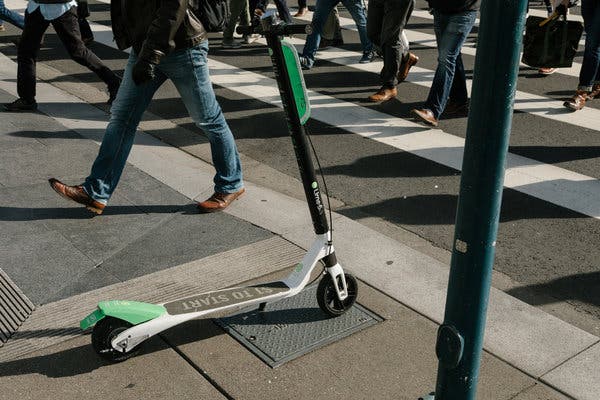Written by Carly Verbeke:
A few months ago, I was walking with a friend on the sidewalk and there was a group of people behind us. As my wheelchair took up most of the pavement and my friend occupied the majority of the space left over, there wasn’t really room for the group to pass us. So, they did the logical thing – walked on the grass and glared at me as they went around. Once they were out of earshot, my friend looked at me and said, “you physically cannot make your stature any smaller, and they didn’t think to ask me to move, so why are you at fault?”
I’ve been able to hear her voice ever since. Every time someone’s car is blocking the ramp to the sidewalk and I have to turn around to go on the road, or somehow have to maintain my balance while trying to pick up an e-scooter and drag it out of the way, I hear her saying: you physically cannot make your stature any smaller, why should this be your problem? The thing is, she’s right. My wheelchair isn’t some Go-Go Gadget creation with a button that I can push to make my wheelchair fit into any kind of space, but no one thinks like that until they have actually done it themselves.
If you live in a big city, chances are you’ve seen these e-scooters that I’m ranting about just laying around. In theory, these scooters are great: you download an app, put in your credit card information, and you can rent an e-scooter for as long as you’d like, exponentially decreasing your travel time compared to what it would be if you were walking. That’s great, but what do you do with the scooter when you’re done using it? Most people tend to leave it right where they are standing and not think twice about it. That is, of course, until you see a person in a wheelchair sitting by it with a defeated look on their face. Would it be easier to turn around and go on the road, or to try to drag it out of the way?

What most people don’t realize is that leaving these scooters wherever you want is actually against the law. No, there is no federal decree that says you’ll be fined if you leave an e-scooter on the sidewalk, but Title II of the Americans with Disabilities Act (ADA) does say that a “path of travel” includes a continuous, unobstructed way of pedestrian passage by means of which the area may be approached, entered, and exited, and which connects the area with an exterior approach. For those of us who don’t speak ADA, an accessible path of travel may consist of walks and sidewalks, curb ramps and other interior or exterior pedestrian ramps. By leaving an e-scooter wherever you stop, you’re obstructing an accessible path of travel and essentially breaking the law.
That last thing might be alarming for some of you. The point of this article, though, is not to draw your attention to the law; instead, I would like to draw your attention to the fact that by leaving an e-scooter wherever you stop is a blatant disregard to the safety of others. Believe it or not, wheelchairs are not street legal. Since a wheelchair user is sitting down, they lose a lot of their height, and are probably not visible to the person driving the car behind them. This means that if I choose to go on the road as a way to get around the e-scooter that was left in front of my ramp, my safety is definitely in question. Or, let us imagine that I am someone who is legally blind. A 25-year-old (who did not want her name used) said that an e-scooter impaled her ribs as she was walking to class. “The handlebar smacked into me, knocked me over and left me in considerable pain,” she said.
This student is not the only one who has an issue with these scooters. In emergency rooms across the country, trauma doctors have reported an influx of severe injuries among users of the devices that began as soon as they appeared on city streets. With the number of e-scooter related accidents picking up, a Bird representative said, “Bird instructs riders to follow all local rules regarding e-scooter riding. We are deeply committed to the safety and well-being of the entire community, and so we make a concerted effort in every city where we operate to provide safety information to our riders that reflects their city’s rules.” Regardless of local laws, critics say, scooter riders — often lacking access to bike lanes and hoping to avoid speeding cars — frequently take refuge on crowded walkways. While able-bodied people can usually maneuver around e-scooters, the elderly and disabled can have a much harder time. The result often leads to extremely high medical bills.

